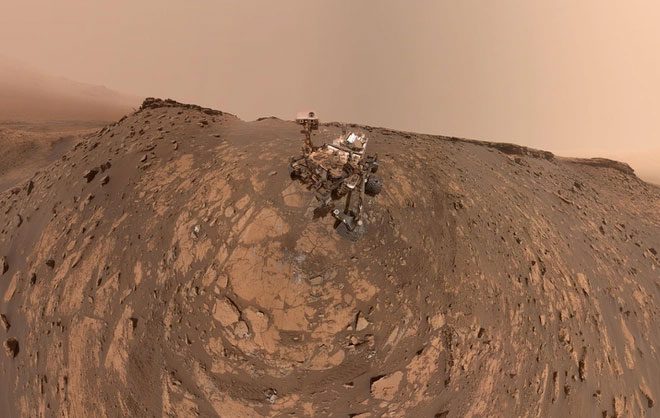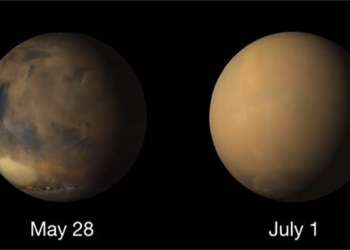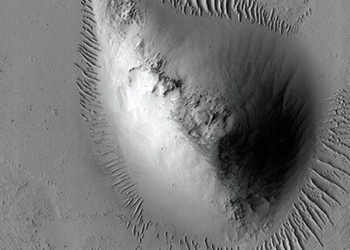Mars lacks the magnetic shield and thick atmosphere of Earth, making it vulnerable to radiation attacks on its surface. However, recent research has revealed several locations on Mars that may offer a way to “dodge” radiation.
For humans, radiation poses a deadly threat. How can explorers cope with this? They will need a shelter, and they must either bring a special tool with them or somehow construct one on Mars. Alternatively, they could utilize natural features as part of their protective measures.
A new study utilizing data from the Mars Science Laboratory (MSL) Curiosity has explored several potential shelters from radiation.
When the MSL Curiosity landed on the surface of Mars in 2012, it carried a device known as the Radiation Assessment Detector (RAD).

RAD data shows that near the Murray Buttes region, radiation levels decrease by about 5%.
RAD is preparing for future human visits to Mars. It detects and measures harmful radiation on Mars emitted by the Sun and other sources. It can also assess the danger that radiation poses to any microbial life that may exist on Mars. The device is about the size of a toaster and is discreetly located on the upper surface of Curiosity.
One of the areas studied by MSL with RAD is the Murray Buttes region. The Murray Buttes are located on the lower slopes of Mount Sharp within the Gale Crater.
Curiosity primarily investigates geology, particularly the characteristics of sandstone and a type of layering known as “cross-bedding.” Meanwhile, RAD continues to collect data. This data indicates a reduction in surface radiation.
RAD data shows that near the Murray Buttes region, radiation levels decrease by about 5%. The research team also constructed a sky view map, indicating that 19% of the sky is obscured when the rover is adjacent to the Murray Buttes. This information is crucial.
As Curiosity traverses the Murray Buttes area, it encounters no obstacles to the sky due to the topography. Thus, the team created a panoramic sky view from an average taken in the months prior for comparison with the collected data.
Scientists also discovered that similar surface features that may protect against direct radiation could also increase reflected radiation. RAD indicated that the Murray Buttes could generate an increase in secondary reflected radiation. This complexity is one of the challenges in understanding radiation on Mars. Radiation on the surface of Mars is not consistent but rather fluctuates.
The orbit of Mars changes its distance from the Sun, which also affects surface radiation. Lower elevations experience less radiation compared to higher elevations. Radiation is not a uniform phenomenon: it consists of protons, alpha particles, ions from various elements, neutrons, and gamma rays.
This research helps to paint a broader picture of the radiation environment on Mars. There is much thought being given to utilizing in-situ resources on the Red Planet. Shelter is a primary necessity for explorers on Mars, and if it is possible to gain an advantage by using existing topographical features for protection, those features will align with future missions.
There has been extensive discussion about establishing bases within lava tubes, where humans would be protected by several meters of Martian regolith. However, astronauts cannot spend all their time there. They must be exposed to radiation.
Any crewed mission to Mars will require multiple layers of backup protection. In the event of an emergency, it is crucial to keep the radiation exposure of astronauts as low as possible.





















































